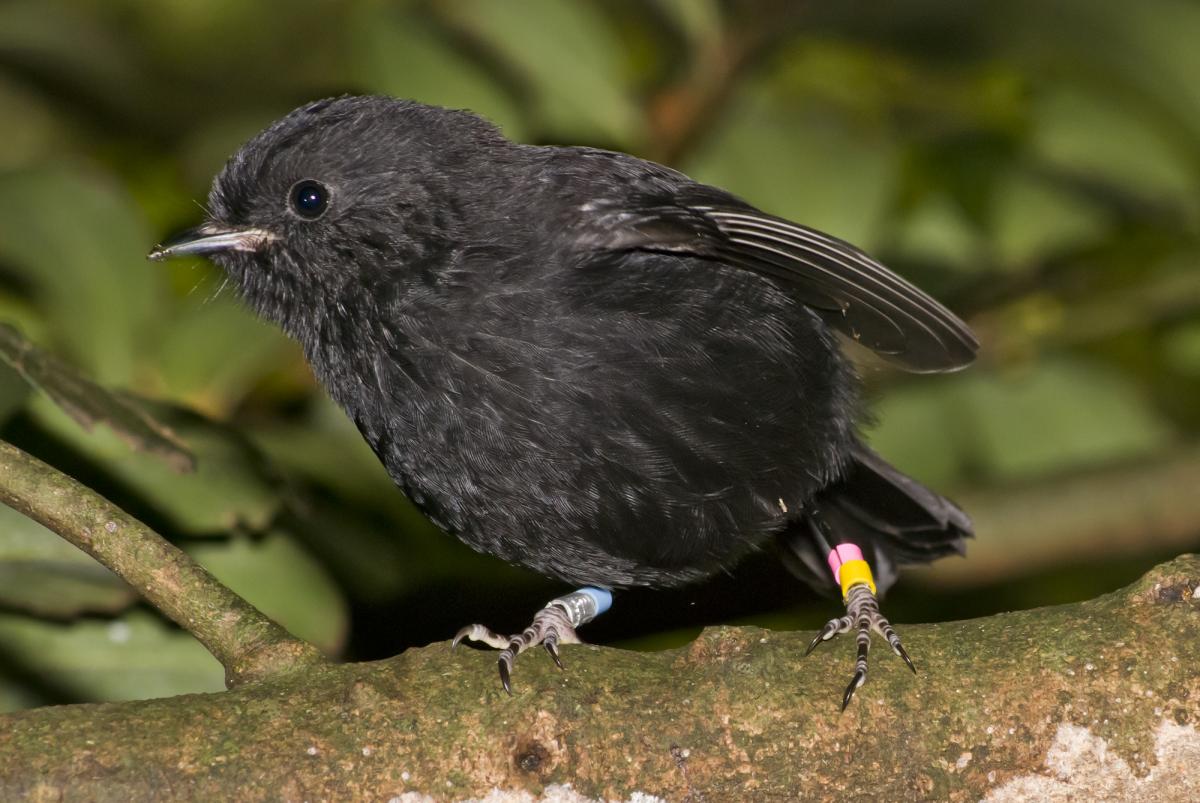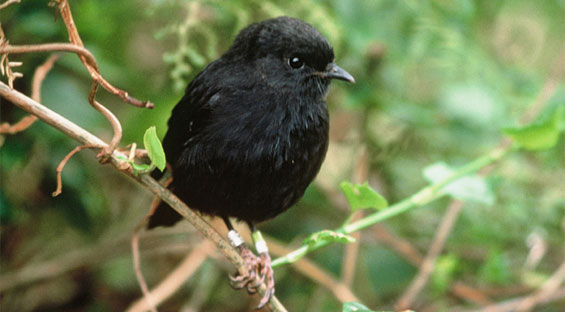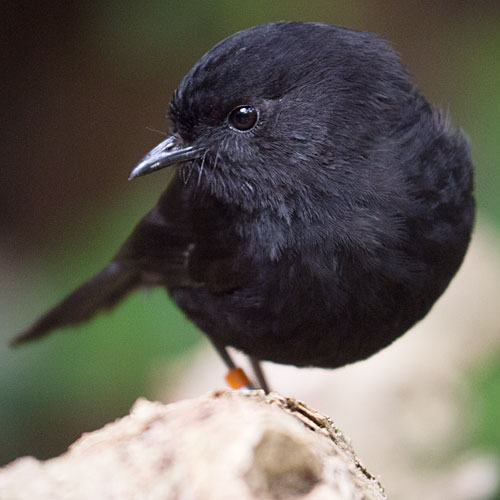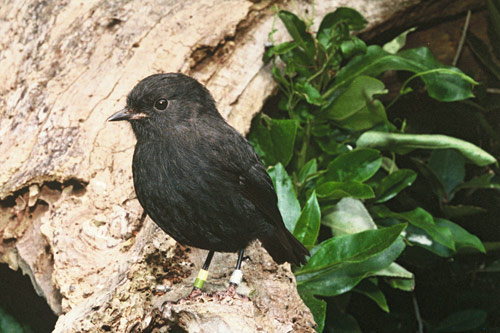
Petroica traversi
SUBFAMILY
Petroicinae
TAXONOMY
Miro traversi Buller, 1872, Chatham Islands, New Zealand.
OTHER COMMON NAMES
English: Chatham Islands robin, Chatham robin; French: Miro
des Chatham; German: Chathamschnдpper; Spanish: Tordo de
Chatham.
PHYSICAL CHARACTERISTICS
5.5–6 in (13–15 cm); 0.8 oz (23 g). All black with stocky build.
DISTRIBUTION
Chatham Islands, New Zealand.
HABITAT
Scrubby forest on islands.
BEHAVIOR
Tame and tolerant of human intrusion, but defends small territories
while breeding.
FEEDING ECOLOGY AND DIET
Hops on ground or low branches, taking invertebrates, such as
cockroaches and wetas, grubs, and worms.
REPRODUCTIVE BIOLOGY
Breeds from October to January, with several attempts. Nests
placed in tangles of low vines or in cavities in tree trunks and
limbs, occasionally in old blackbird (Turdus merula) nests.
Clutch is comprised of two, occasionally three, eggs. Incubated
for 18 days, young fledge after 23 days and depend on parents
for six more weeks.
CONSERVATION STATUS
Endangered. Declined on Chatham Islands after European settlement
due to loss of habitat and introduced mammals, such
as rats and cats. By 1980, there were only seven birds, with just
Heteromyias albispecularis
one successfully breeding pair. All birds were moved to another
island, and egg-manipulation and cross-fostering of eggs and
young to warblers (Gerygone albofrontata) and tomtits (Petroica
macrocephala chathamensis) allowed the population to recover to
about 200 birds.
SIGNIFICANCE TO HUMANS
The rescue of the Chatham Island black robin from extinction
attracted widespread interest in New Zealand, so much so that
the death of the old breeding female (“Old Blue”), who was
used to save the species, was announced in a press release from
the Minister of Internal Affairs. A detailed account of the
struggle to save what was then the rarest bird species in the
world is told by David Butler and Don Merton (1992).
Photo Gallery of - Chatham Island black robin




 Animalia Life
Animalia Life